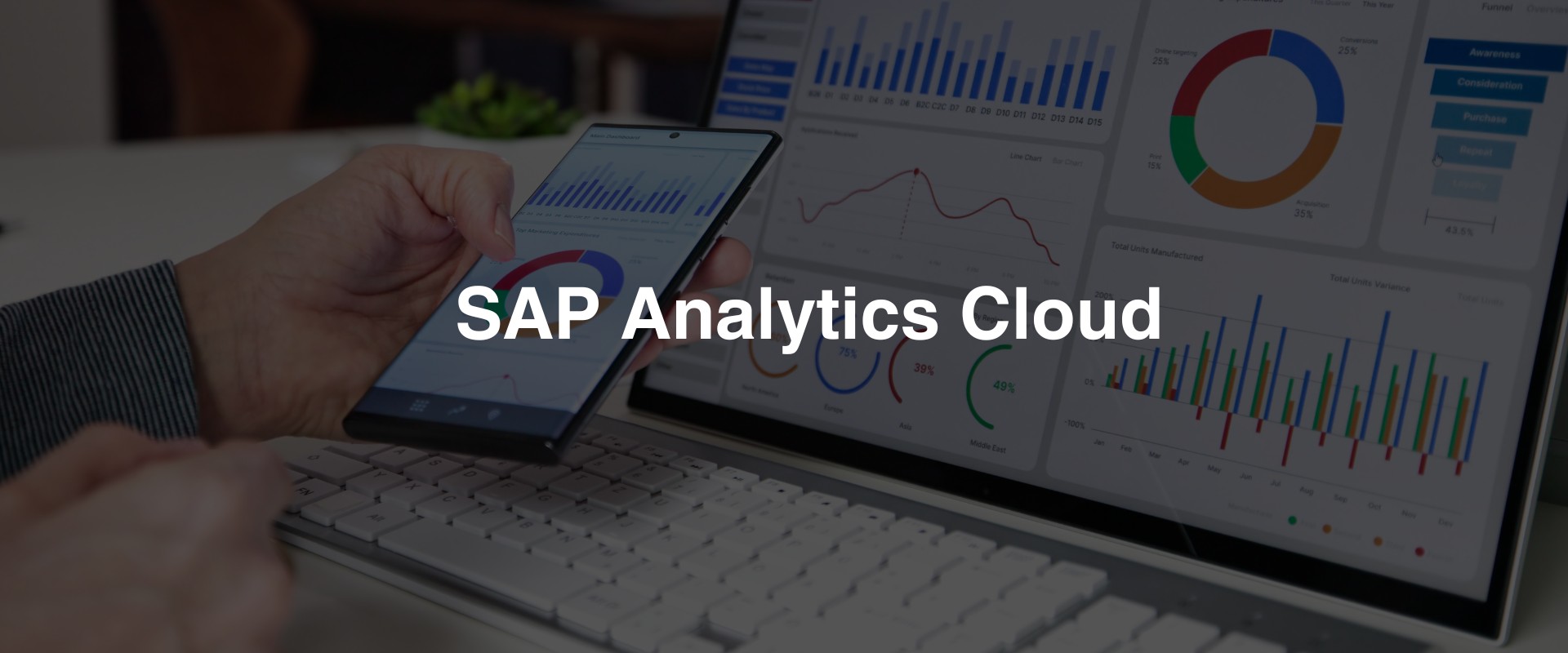Why SAP Analytics Cloud is Worth Your Attention

In today’s data-driven world, businesses generate more information than ever before. Sales data, customer feedback, operational metrics, financial reports — the list goes on. But here’s the catch: collecting data is easy; making sense of it is the real challenge.
Many organizations still struggle with fragmented reporting tools, delayed insights, and decisions based on outdated or incomplete information. That’s where SAP Analytics Cloud (SAC) steps in.
SAP Analytics Cloud is a cloud-based, all-in-one analytics platform that brings together business intelligence, planning, and predictive analytics — all on a single, intuitive interface.
Whether you’re a beginner exploring analytics for the first time, or a decision-maker looking for real-time, actionable insights, SAC is designed to make data more accessible, understandable, and impactful.
This guide is designed to help you understand what SAP Analytics Cloud is, what it offers, and how it can transform the way you view and use your business data.
By the end of this article, you’ll know exactly why so many companies — from startups to global enterprises — are choosing SAC as their go-to analytics solution.
What is SAP Analytics Cloud? Key Components Explained

At its core, SAP Analytics Cloud (SAC) is an integrated, cloud-based platform designed to help businesses analyze data, plan ahead, and make smarter decisions — all in one place.
Unlike traditional analytics tools that focus only on reporting past performance, SAC combines business intelligence, planning, and predictive analytics so you can understand what’s happening, why it’s happening, and what could happen next.
Let’s break down its key components so you can see what makes SAC unique:

Business Intelligence (BI)
This is the heart of SAC — helping you understand your business as it stands today.
With BI capabilities, you can:
- Connect to various data sources (cloud and on‑premise)
- Visualize data with dashboards, charts, and reports
- Drill down into data for granular analysis
- Monitor KPIs in real‑time
For beginners, the intuitive interface makes it easy to build reports and dashboards without needing deep technical expertise.

Planning
Most analytics tools stop at showing you what already happened. SAC takes it a step further with built-in planning features.
You can:
- Create budgets and forecasts directly within the platform
- Perform “what‑if” scenarios to model possible outcomes
- Collaborate across teams on financial and operational plans
- Align your entire organization to a single version of the truth
This is especially useful for businesses that want to integrate planning into their analytics workflow.

Predictive Analytics
Data is more powerful when it helps you look ahead.
With SAC’s predictive analytics tools, you can:
- Identify patterns and trends in your data
- Run predictive forecasts powered by machine learning
- Discover hidden relationships between variables
- Make decisions based on data‑driven projections
For example, sales teams can predict future demand, while operations can foresee inventory needs.

Collaboration and Accessibility
Because SAC is cloud‑based, it enables seamless collaboration.
- Users can access dashboards anytime, anywhere, on any device.
- Team members can comment and collaborate directly on reports.
- Everyone stays aligned with real‑time updates and shared insights.
Top Benefits of SAP Analytics Cloud for Businesses
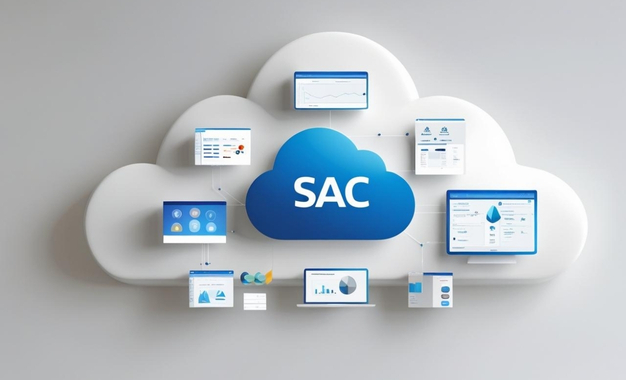
Investing in analytics isn’t just about pretty dashboards — it’s about transforming how you run your business.
SAP Analytics Cloud offers a range of benefits that go far beyond traditional reporting tools.
Here’s how SAC helps businesses unlock the true power of their data:
Real-Time, Data-Driven Decision Making
Gone are the days of waiting days — or even weeks — for reports to arrive.
SAC connects to your live data sources, giving you up-to-the-minute insights into your business performance.
Managers and teams can react to changes in real time, not after the fact.
One Unified Platform
Many businesses rely on separate tools for analytics, planning, and predictive modeling — which leads to inconsistent data and duplicated efforts.
SAC eliminates this by offering everything in a single platform:
- No need to switch between systems.
- One version of the truth.
- Better collaboration across departments.
Cloud-Based Flexibility
Because SAC is hosted in the cloud, you don’t have to worry about heavy IT infrastructure, maintenance, or hardware investments.
It’s always up-to-date, scalable as your business grows, and accessible from anywhere — perfect for today’s hybrid and remote work environments.
Ease of Use
SAP designed SAC with user experience in mind.
- Simple drag‑and‑drop interface.
- Prebuilt templates and models for beginners.
- Guided workflows that help non‑technical users build reports and dashboards.
Even employees without a data science background can use SAC to uncover insights and share findings.
Advanced Analytics Made Accessible
Machine learning and predictive algorithms might sound intimidating — but SAC makes them easy to use.
- Detect patterns you might not see manually.
- Forecast trends with confidence.
- Identify anomalies before they become problems.
This allows smaller teams to harness advanced analytics without hiring data scientists.
Better Collaboration
Since SAC is cloud‑based and designed for teamwork, multiple users can work on dashboards, planning scenarios, and reports at the same time.
This improves transparency, alignment, and productivity across the organization.
Scales With Your Business
Whether you’re a small business looking to improve reporting, or a global enterprise managing complex planning scenarios, SAC can scale with your needs.
It grows alongside your company — no need to rip and replace as you expand.
How SAP Analytics Cloud Helps Businesses in Dubai and the UAE

The business landscape in Dubai and across the UAE is highly dynamic, competitive, and diverse. Companies operate in a fast‑moving environment where real‑time insights and agility can make or break success.
SAP Analytics Cloud is particularly well‑suited to help businesses in the region meet these unique challenges and seize emerging opportunities.
Compliance with Local Regulations
Businesses in the UAE must navigate complex VAT laws, financial reporting standards, and industry‑specific regulations.
SAC makes it easier to:
- Generate accurate, audit‑ready reports.
- Track financial KPIs in real time.
- Maintain transparency with stakeholders and regulators.
This helps companies stay compliant while avoiding penalties and inefficiencies.
Supporting Growth and Diversification
The UAE is known for its ambitious growth and diversification strategies — and businesses need tools that can scale alongside them.
SAC’s cloud‑based, scalable nature makes it ideal for:
- Startups expanding into new markets.
- Established companies adding new business lines.
- Enterprises managing multi‑location operations across the Gulf and beyond.
Real-Time Visibility in a Fast-Moving Market
In sectors like retail, real estate, logistics, and hospitality — which are all significant in Dubai — conditions can change quickly.
With SAC, managers can:
- Track occupancy rates, inventory, or bookings live.
- Adjust pricing or operations on the fly.
- Forecast demand more accurately for peak seasons or events.
Empowering a Diverse Workforce
The UAE workforce is highly multicultural, with employees of varying technical skills.
SAC’s intuitive design and multi‑language support mean that teams across different roles and levels can adopt it quickly — improving collaboration and alignment.
Supporting Sustainability Goals
As Dubai moves toward its vision of becoming a global leader in sustainability, many businesses are tracking and reporting their environmental KPIs.
SAC enables companies to:
- Monitor energy consumption.
- Track emissions and resource use.
- Build reports aligned with ESG standards.
By addressing these local needs, SAP Analytics Cloud helps businesses in Dubai and the UAE become more competitive, more efficient, and more resilient in a rapidly evolving market.
Practical Examples: How Businesses Use SAP Analytics Cloud Day-to-Day

It’s one thing to talk about features and benefits — but what does SAP Analytics Cloud look like in action?
Here are a few real‑world examples that illustrate how companies use SAC in their daily operations to improve decisions and outcomes.

Retail Chain Improving Inventory Management
A UAE‑based retail chain was struggling with stockouts at popular locations and overstock at others.
Using SAP Analytics Cloud:
- Store managers monitored real‑time inventory levels across branches.
- Forecasting models predicted seasonal demand by product and location.
- The supply chain team adjusted deliveries dynamically, reducing costs and waste.
Result: Better customer satisfaction, reduced inventory holding costs, and higher profitability.
Real Estate Developer Tracking Sales and Occupancy
A property developer needed to monitor unit sales and occupancy rates across multiple residential and commercial projects.
With SAC:
- Sales teams updated bookings directly into dashboards accessible company‑wide.
- Executives reviewed real‑time revenue projections and occupancy trends.
- Marketing campaigns were adjusted to focus on underperforming units.
Result: Faster response to market changes and improved cash flow planning.

Manufacturing Company Planning Production
A manufacturer in Sharjah faced challenges aligning production with fluctuating demand.
SAC allowed them to:
- Analyze historical sales data alongside current orders.
- Use predictive analytics to forecast future demand.
- Adjust production schedules accordingly to avoid under‑ or over‑production.
Result: Optimized production costs and improved delivery times.

Financial Team Automating Reporting
A financial services firm spent days compiling monthly reports for management.
After implementing SAC:
- Data from multiple systems was consolidated automatically.
- Dashboards updated in real time as new transactions occurred.
- Reports were generated in minutes, freeing up time for deeper analysis.
Result: Faster reporting, improved accuracy, and better strategic insights.
These scenarios highlight how SAC isn’t just a tool for IT or analysts — it’s a business enabler for every department, from finance to operations, sales to supply chain.
Recent Developments & Updates in SAP Analytics Cloud (2024-2025)
SAP continuously enhances SAC to keep up with industry demands. The latest updates include:
Update | Description |
SAP Datasphere Integration | Centralized storage for SAC model data, reducing data silos and improving accessibility. |
AI-Powered NLP (Just Ask) | Users can ask questions in plain English and receive AI-generated insights instantly. |
Video Data Storytelling | Users can embed videos in dashboards to enhance presentations and reports. |
Monte Carlo Simulation | Helps organizations assess potential risks and optimize decision-making strategies. |
Leading Companies Using SAP Analytics Cloud
Many global enterprises leverage SAC to gain a competitive edge:
- Siemens: Uses SAC for real-time financial monitoring and strategic decision-making.
- Unilever: Implements SAC to optimize supply chain and inventory management.
- Coca-Cola HBC: Tracks sales performance across multiple geographies with SAC-powered dashboards.
- Shell: Enhances sustainability tracking and energy efficiency analysis using SAC.
Final Thoughts: Power of Your Data with SAP Analytics Cloud
In today’s fast‑paced, data‑driven world, making decisions based on outdated or incomplete information is no longer an option.
Businesses in Dubai, the UAE, and beyond need tools that not only analyze the past, but also help plan the future and react to the present — all in real time.
SAP Analytics Cloud delivers on that promise by unifying business intelligence, planning, and predictive analytics in one powerful, intuitive platform.
Whether you’re a small business looking to streamline reporting or an enterprise managing complex forecasts, SAC gives you the clarity and agility you need to stay ahead.
By adopting SAP Analytics Cloud, you empower your teams to make smarter decisions, faster — and transform data into a true competitive advantage.
FAQs
What is SAP Analytics Cloud in simple terms?
It’s a cloud‑based platform that helps businesses analyze data, plan ahead, and predict trends — all in one place.
Who can use SAP Analytics Cloud?
It’s designed for businesses of all sizes, from startups to large enterprises, and across industries.
Is SAP Analytics Cloud only for technical users?
No — it’s built to be intuitive and accessible, even for users without a technical background.
Does it integrate with other systems?
Yes — SAC can connect to both SAP and non‑SAP data sources, whether cloud‑based or on‑premise.
How does SAC help in planning and forecasting?
It lets teams create budgets, forecasts, and run “what‑if” scenarios to prepare for different business situations.

Jewel Susan Mathew
Experienced SAP specialist and content writer, helping CXOs and leaders drive digital transformation with SAP solutions like S/4HANA, Ariba, Business One, and SuccessFactors.
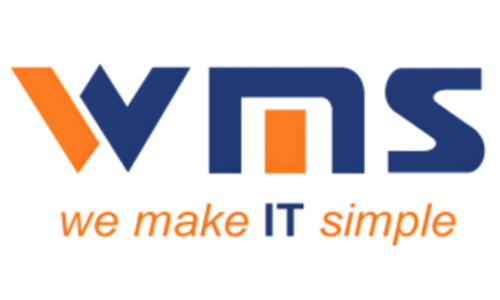
 SAP Cloud ERP Private
SAP Cloud ERP Private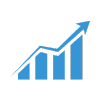 SAP Cloud ERP
SAP Cloud ERP SAP Business One
SAP Business One SAP Business ByDesign
SAP Business ByDesign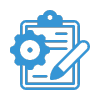 SAP SuccessFactors
SAP SuccessFactors SAP Ariba
SAP Ariba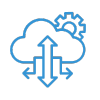 SAP Sales Cloud
SAP Sales Cloud SAP Concur
SAP Concur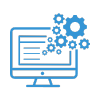 SAP Business Technology Platform
SAP Business Technology Platform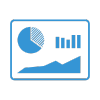 SAP Analytics Cloud
SAP Analytics Cloud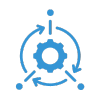 SAP Signavio
SAP Signavio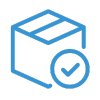 SAP Business One FASHION
SAP Business One FASHION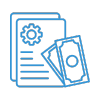 SAP Business One PAYROLL
SAP Business One PAYROLL SAP Business One PDC
SAP Business One PDC SAP Business One PDT
SAP Business One PDT SAP Business One REAL ESTATE
SAP Business One REAL ESTATE SAP Business One RENTAL
SAP Business One RENTAL



